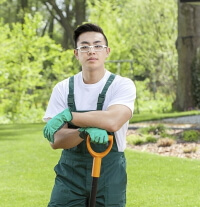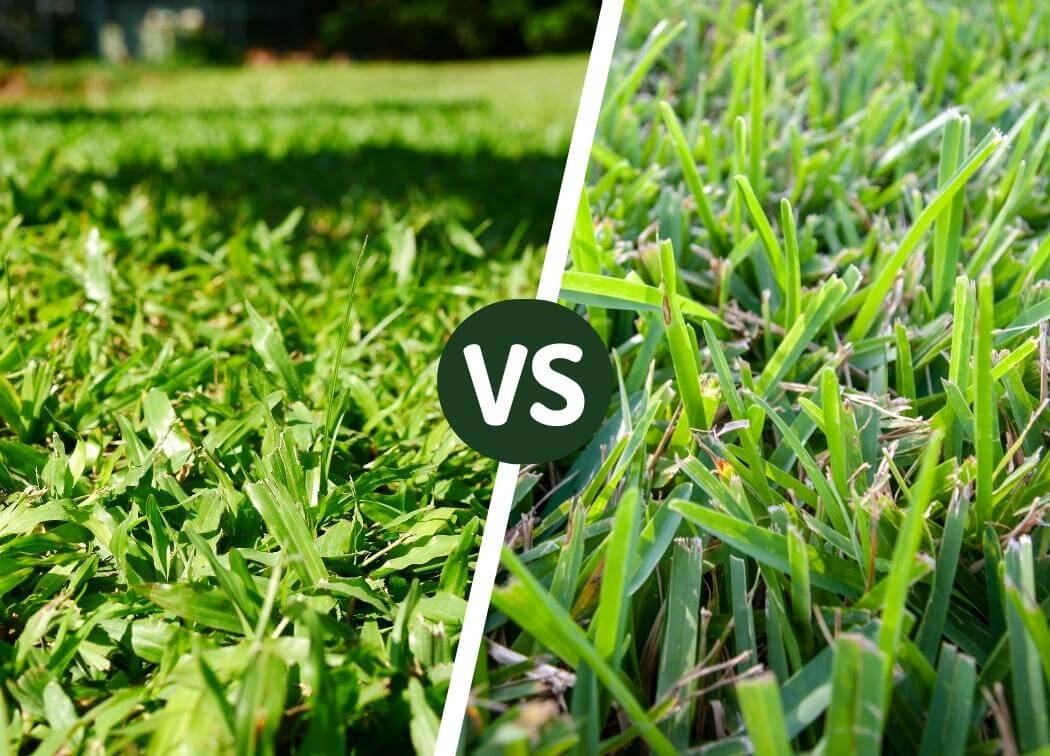You might be wondering, “What’s the best warm-season lawn grass?”
It’s either the Bermuda grass or the St. Augustine grass, but which one really is it? You can either choose one from the two or get the best of both greens!
The main difference is that Bermuda Grass is highly drought resistant. It can also tolerate the hot weather during the summer, even without water! On the other hand, St. Augustine demands a considerable amount of water to thrive in wonders. Another considerable difference between them is that St Augustine grass is shade resistant, while Bermuda lacks a bit when it comes to shady areas.
Comparison Of Their Differences
Both grasses are terrific at choking out weeds such as dandelions, crabgrass, and even quackgrass.
This is mainly because both St. Augustine and Bermuda can flourish into thick and full greenery for your yard to take out weeds.
If you live in Texas, Florida, or areas where it is always spring or summer, you should really consider the differences between these two kinds of grass.
Bermuda Grass
It is a warm-season perennial grass that spreads above the ground runners and its underground root system.
Additionally, bermudagrass grows faster than any other warm-season grass, allowing it to quickly recover from heavy use.
Bermuda grass requires much richer soil and benefits from more frequent top dressings of compost.
What else?
- The Bermuda grass needs FULL SUNLIGHT ALL DAY LONG to grow flawlessly.
- A Bermuda lawn would need three times watering a week during the summer and always during the winter season.
- A Bermuda lawn is also best rooted in grass seed.
- It is an unspoken rule that you also fertilize the overseeded Bermudagrass twice in December and February.
- Do not tolerate shade AT ALL.
- Highly tolerant of heavy foot traffic and stress.
- Like St. Augustine grass, bermudagrass has a high salt tolerance.
- It also can be grown for golf courses, hay, and, most importantly, lawn.
- Bermuda lawns are also cheaper and easier to stabilize a thicker turf with a lot of movement.
Varieties
Bermuda grass has relatively short blades that measure 2 to 15 cm.
Mowing triggers lateral growth, making your lawn thick and full.
When nodes touch the ground, the sod will grow and spread laterally on the surface, sprouting new leaves and shoots.
The main methods in how these warm-season grasses spread are by:
- Stolon
- Rhizome
- Seed
Here are some of the varieties:
- Long Bermuda grass
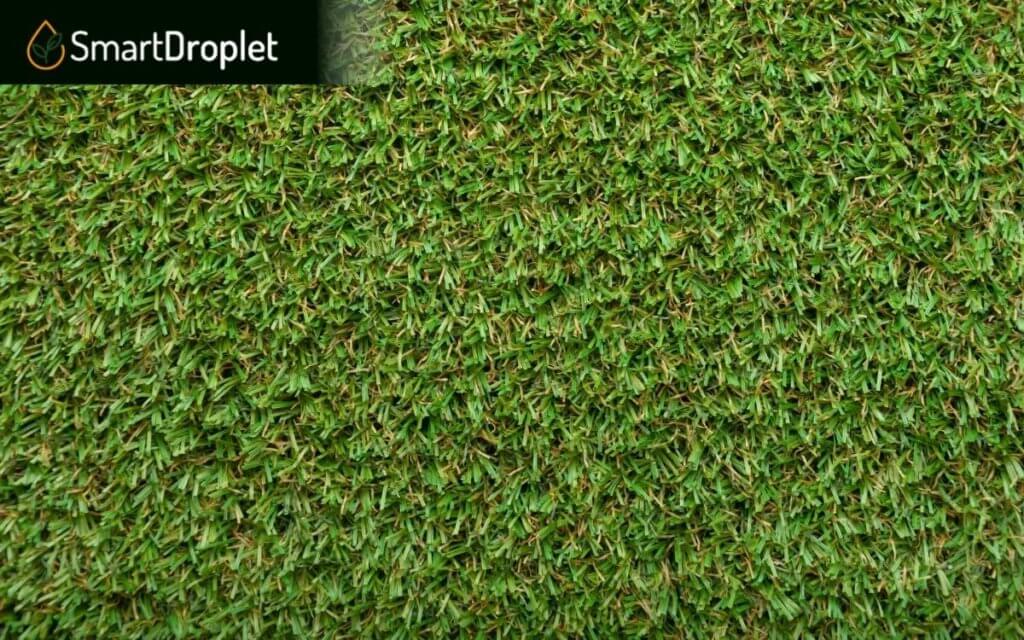
- Bermuda sod on rolls
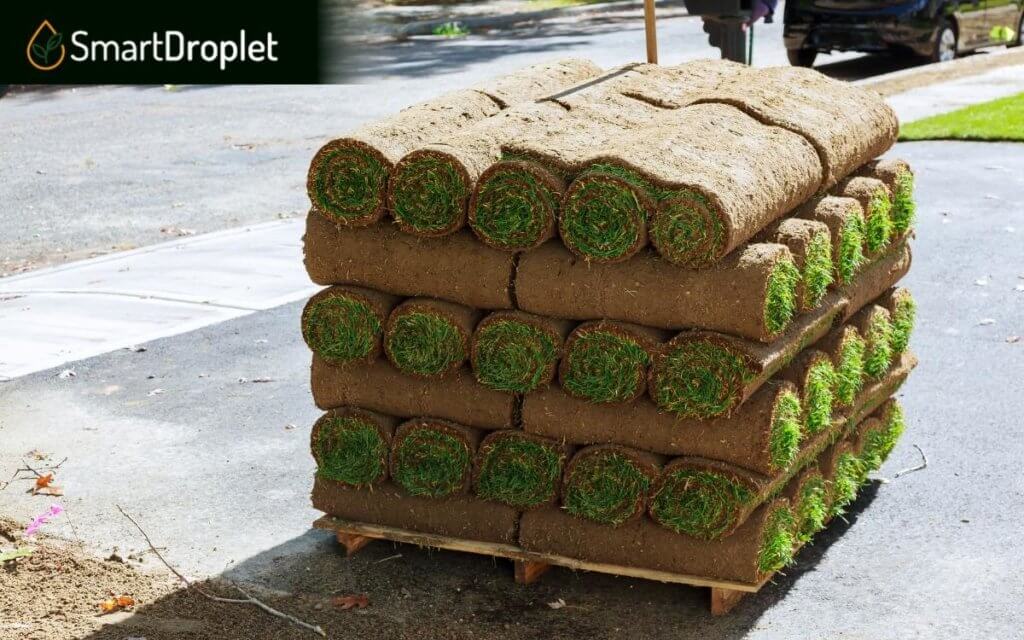
If you choose Bermuda grass, we recommend that you go with this Bermuda seed:
St. Augustine Grass
St. Augustine is a salt-tolerant turf suited for subtropical, humid areas.
It is the most widely used warm season turfgrass in the southern United States or coastal regions.
It thrives in many soil types, including sandy soil, as long as it’s well-draining.
What else?
- It needs AT LEAST 5 HOURS OF DAYLIGHT to flourish and thrive beautifully. It does not require full sunlight.
- They can do better in low light than the Bermuda grass.
- It needs TWICE AS MUCH water as the Bermuda grass demands. It needs 4 times watering per week during summer.
- St. Augustine grass is fertilizer-intensive and needs frequent fertilization every two months or a slow-release nitrogen fertilizer every 10 weeks.
- St. Augustine lawn quickly settles in sod. They are mainly for lawns.
- They do not do well in foot traffic, and they are costly to maintain because they demand frequent mowing, fertilization, and watering.
Unlike St. Augustine, you can easily plant bermudagrass with seeds.
But, like St. Augustine, you can also plant bermudagrass with plugs or sod.
You can also use a technique called sprigging, where you press sprigs of rhizomes and stolons into the soil.
Varieties
Various cultivars have been developed, including:
- Floratam sod
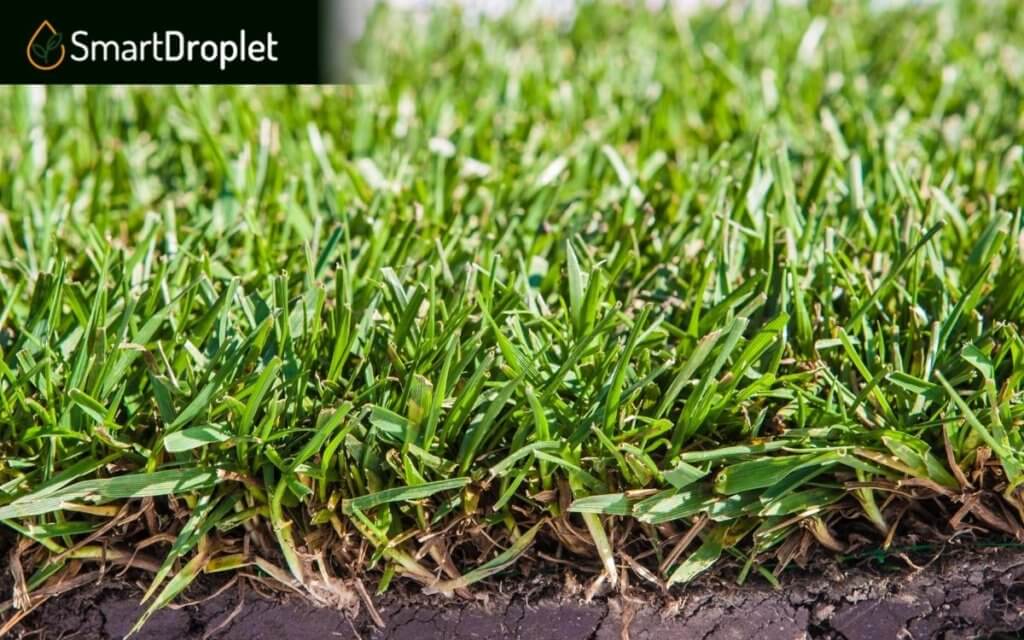
- Palmetto sod
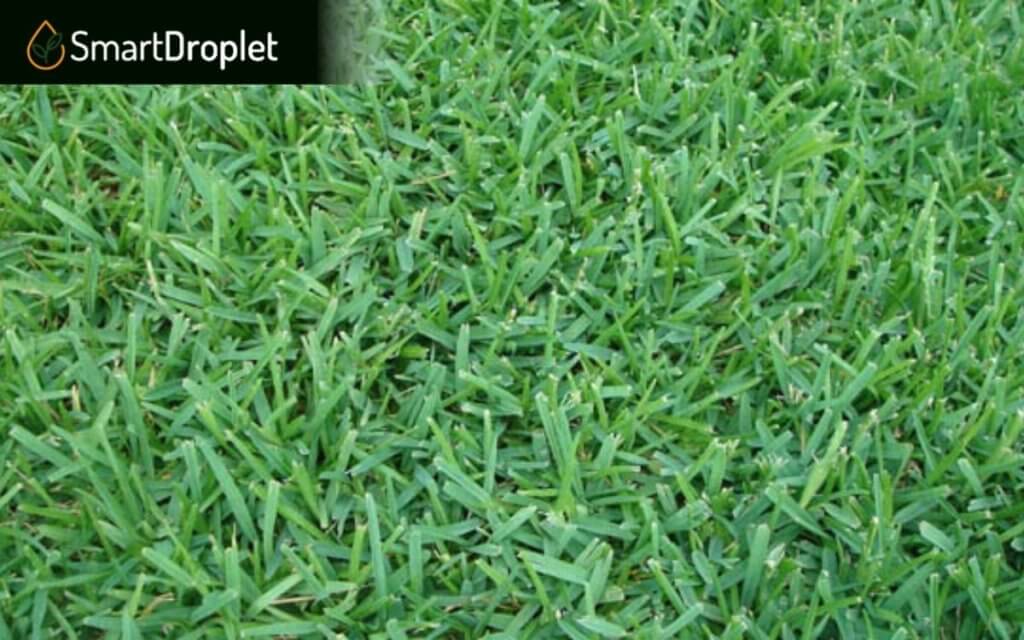
- Floratine sod
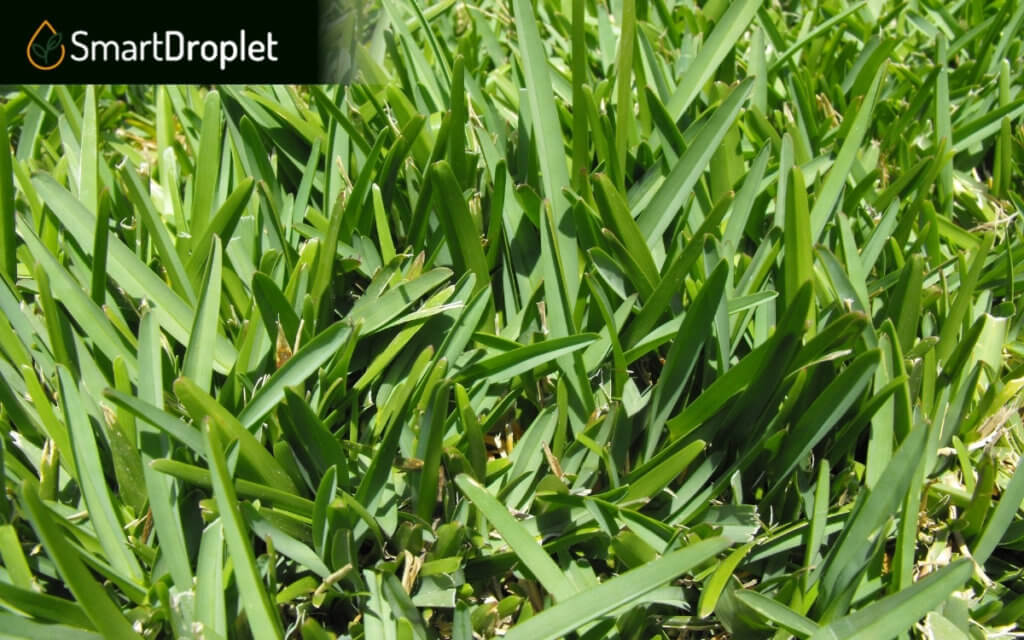
- Augustine decline
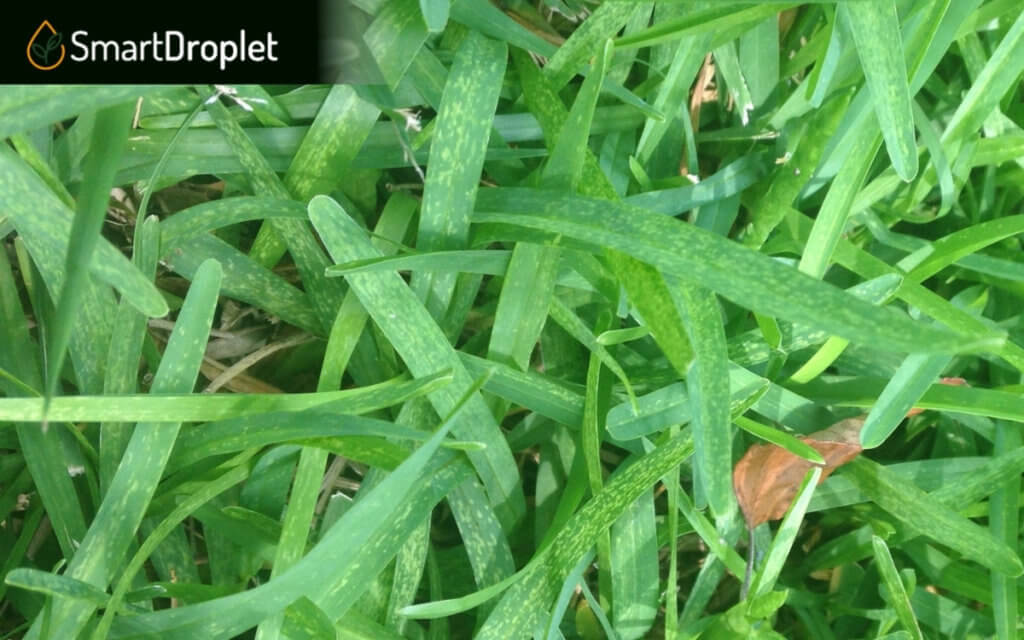
- Captiva
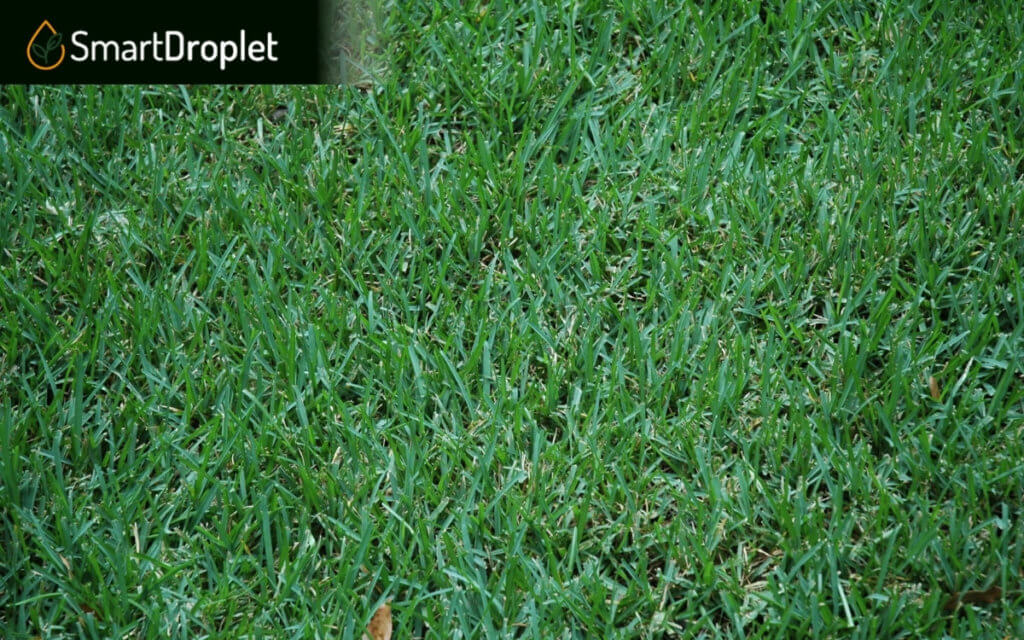
- Raleigh
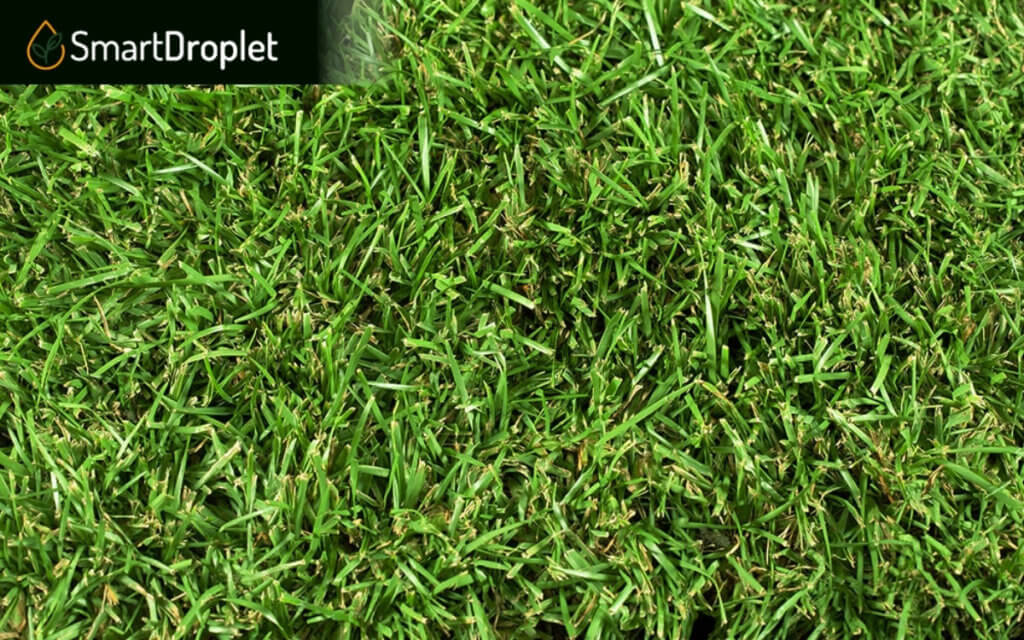
- Texas common
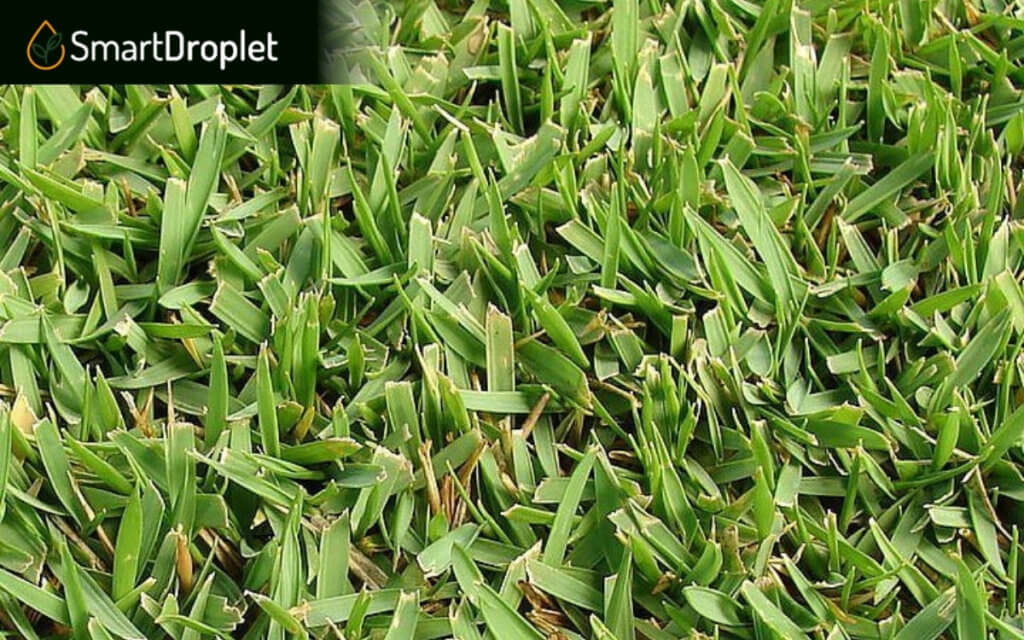
Our recommendations for Saint Augustine grass plugs because there is no such thing as Augustine sod or seed, use plugs instead:
You can shop for your preferred Augustine sod here.
You can also have them delivered directly to your door by subscribing to crabgrass lawn’s newsletter or various other affiliate programs!
St. Augustine Grass vs. Bermuda Grass – Ultimate Battle
This will help you decide whether you should choose Bermuda grass or St. Augustines!
Appearance
The Bermudagrass has more short flat leaves, while the St. Augustine grass has big flat stems.
St. Augustine grass is usually dark green with broad, flat leaves. It grows fast, crowding and choking out weeds.
The former usually contains spikelets borne in four or five slender spikes at the tips of its upright stems.
Weed Tolerance
Both Bermudagrass and St. Augustine have outstanding weed tolerance.
Both Bermuda and St. Augustine grow and disperse quickly, creating an entire thick lawn.
They can crowd control and kill weeds by themselves, saving you money from buying lawn weed killers.
St. Augustine’s wide blades help camouflage weeds that would look unsightly on other lawns.
St. Augustine Grass vs. Bermuda Grass: Lawn Care and Plant Tips
Be sure to take these pieces of advice seriously to ensure you don’t encounter any issues whatsoever.
St. Augustine Requires:
Since it is not highly drought resistant, we suggest you set your lawnmower to a height of between two and a half to four inches during hot weather.
As long as you don’t let them grow too tall, you can leave the clippings on your lawn instead of bagging them.
For St. Augustine to thrive, it often needs fertilization. It will keep your lawn from turning yellow if you decide to get its new sod.
Continue to keep an eye out throughout the summer and water it as needed to avoid bare spots.
You won’t be shocked to learn that a bit of direct sunlight will require the lawn to be watered more often.
If ever you decide to DIY, learn more about them, their hydration requirements, and if it needs direct sunlight, more sunlight, or full sun.
Bermudagrass Requires:
A daily light sprinkling of water is all that’s necessary.
After the seed is established into the grass, the sprinkling frequency decreases, but the amount of water increases.
Fertilize six weeks after planting with plant food that releases propellant slowly.
Apply a pre-emergence weed control in the fall.
St. Augustine Grass vs. Bermuda Grass Which One Should You Pick
Both St. Augustine and Bermuda grass are excellent choices, but it will depend on your lawn grass setup and preference.
Is Your Greenery Under Shade?
If trees or buildings surround your yard, we recommend that you plant St. Augustine grass because it does not need more sunlight, and trees block that exposure.
Go for Bermuda if your greenery has more exposure to daylight.
How Much Traffic Will There Be On Your Greenery?
Consider the foot traffic. Some grass species can do well, while others don’t.
To avoid any long-term issues, be sure to determine which types can survive in your background.
What’s the Overall Climate?
Both bermuda grass and St. Augustine flourish a lot better in warm conditions,
This is why if you live in Texas or warm areas, they are both suitable.
You can choose either or mix both sods and seeds when planting.
Bermuda can outgrow the other, especially with frequent lawnmowing to control bare spots.
Conclusion
Before you choose between both grasses, make sure to consider everything in this article, including the tips.
We hope this was helpful, don’t forget to share it with your friends!
Enjoy planting and decorating your lawn!

